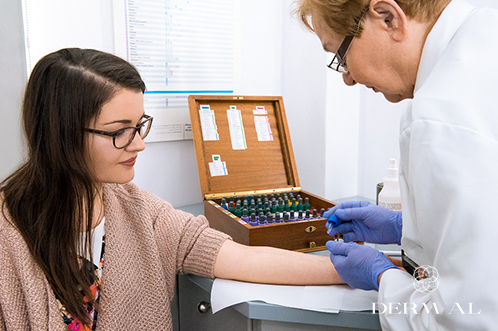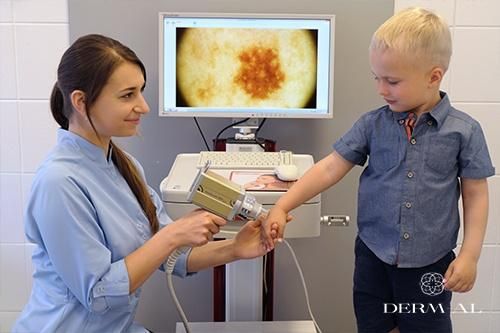Skin prick tests - inhaled allergy panel and food allergy panel

- Description of the treatment
-
Food allergies and inhaled allergies are diagnosed at the Derm-Al Centre by means of skin prick tests.
They detect allergen-specific antibodies in the patient’s skin. These tests detect the presence of antibodies rather than allergy. Sometimes it happens that the test result is positive with a specific allergen but the person has no symptoms after exposure to that allergen in natural conditions (asymptomatic or clinically silent allergy).
Positive result of a skin test may indicate possibility of allergic reaction (atopic allergy) or explain the cause of allergy symptoms.
How does the skin test work
During the test, drops of solutions containing the diagnosed allergens are placed (3 cm apart) on the skin, on the inside part of the forearm. The epidermis is pricked 1 mm deep with a special probe through those drops. A different probe is used for each individual prick to avoid mixing of allergens (this is important to achieve accurate test results). The reaction is verified after 15-20 minutes by measuring the wheals that develop (sometimes accompanied by reddening) and comparing them to the size of the positive and negative control wheals, respectively. Positive control is histamine solution and if the test was properly performed and the patient did not take before the test any medications that could inhibit the reaction (e.g. anti-histamine medications), then the wheal should be at least 3 mm in diameter. Negative control is solution with dissolved allergens.Food allergies may also be diagnosed using native tests. In these tests, natural food products are used (e.g. apple, carrot, celeriac, fish, milk and other). In these tests, negative and positive control tests are applied, and also a food product is pricked with a probe and then the same probe is used to prick the patient’s epidermis.
-




